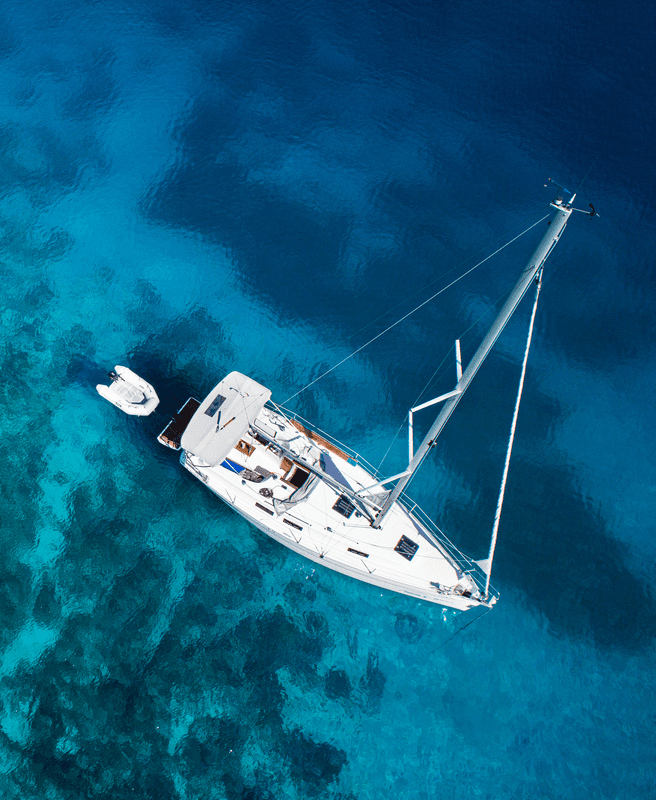This High Interest Bank Account Earned 10% Per Year
November 20, 2023
In a world of historically low yields, people are increasingly coming up with more complicated strategies to beat the markets. Often, in our attempts to achieve greater results than anyone else, we overcomplicate the means of achieving an end goal.
But what if there were an easy offshore banking play that earned 10% per year and required minimal skills to pull off? Would you go for it?
In this article, we look at traditional investment strategies in comparison to one high interest bank account. We highlight the multitude of possibilities you’ll find banking overseas to earn a high return without much effort.
Nomad Capitalist is a turnkey solution for offshore tax planning, dual citizenship, asset protection, and global diversification. Find out more here.
Inconsistent Traditional Investments
Most people usually rely on equity because it’s supposed to give you the highest ROI over time.
In the US, a good mutual fund will tend to give you an annualized rate of return of around 8%-10%, minus 1.5% for fees. Mind you, these are the top funds with stellar managers. This is a very select group.
Most mutual funds don’t beat their benchmark index, meaning that you’re mathematically better off just investing in a passive fund that matches the index they’re trying, and failing, to beat.
The problem with those passive funds is that, oftentimes, you’re either very concentrated in one geographic area or industry. Besides, the results are very volatile, one year you’re down a few percentage points, other years you’re up by 20% – though it averages out over time.
JP Morgan made the case once that, had an investor purchased an index fund of the S&P-500 on January 3, 1995, a decade after they would have made an annualized return of 9.85%.
The catch though was that had this investor missed the ten best days within that time period, they would have only made a 6.10% return; worse still, six of the ten best days were within two weeks of the worst days.
In other words, if you had been unlucky and you had just happened to miss that stock market rally by a day before you put the money, then too bad for you. You should want more consistency in your investments, right?
And besides, many of us trust US financial institutions less by the day. Over the last decade, the US had more bank failures than the rest of the world combined. Think Silicon Valley Bank, for instance.
Maybe you shouldn’t put your retirement savings somewhere with a higher than average risk of collapse. Even with the hope the US Government is feeling in a generous mood when they have to bail out the company holding your assets.
It’s far from a risk-free proposition!
And if you actually want what economists term as “risk-free”, you could buy US Treasury bonds, which will yield a few percentage points per year, unless you want to lock it in for a decade.
The US dollar is the world’s strongest currency today, so the US can set its terms as they see fit. But this would mean that any “profit” you make would get eaten away by inflation, and you would still lose money – despite the fact that percent yield is abysmal.
At some point, you have to consider the opportunity cost as well. “Risk-free” investments will not only leave you lagging behind inflation but you will also be losing the opportunity to pursue a different path that could be much more lucrative.
In this case, you lose quite a bit by going for what is traditionally deemed as “safe”.
So, rather than going for the traditional route, where every investor piles onto Treasuries looking for something safe, what if there was a way to earn money consistently, regardless of when you invested it, with minimal volatility?
Armenia’s High Interest Bank Account
We’re not advocating a particular investment with this article. It’s more important that you get a picture of how the world is far bigger than the US and that there are much better options internationally.
With that said, and with the caveat that past results are not indicative of future performance, let’s look at the story of the Armenian Dram – the stablest currency that you have probably overlooked.
But before we look at this currency in isolation, let’s examine the environment within which that currency is developing. Random numbers, devoid of any context, are not particularly useful.
At its core, foreign currency exchange rates represent the aggregate demand and trust of the economies and the nations using that currency. So, what makes the Armenian Dram so stable?
Armenian culture is quite entrepreneurial. It’s not without reason that Armenia is our number one option for finding remote workers. Regulations in the country are starting to reflect this to make it easier to do business there and taxes are going down.
Granted, it’s not happening very quickly, but there is plenty of potential in this country and it is rapidly making up for lost time with its pro-business regulations.
Partially because of this entrepreneurial zeal, you can find sizable Armenian diasporas all around the world that tend to do very well for themselves. This then ensures that the country has a constant supply of foreign capital inflow in the form of remittances, as well as real estate and business investments back home.
It is this demand from Armenian expats for access to their home economy that ensures stable foreign currency exchange rates.
Half a decade ago, the Armenian Dram was trading at 476 to 1 USD, and up to 2020 it traded at 478 – completely stable in relation to the US Dollar.
However, today, the Dram is one of best performing currencies against the US dollar, appreciating 23.9% since then. It means that 393 Dram now buys one US Dollar.
So, the Dram is not only stable, it offers growth. As the Dram continues to perform well against the dollar, you can enjoy ultra-high interest rates.
That’s why, in Armenia, the Dram pays out in the ballpark of 9.5% to 10.5% interest on 12-month deposits.
This is good. However, emerging economies generally offer those interest rates precisely because their inflation rates are so wild. But you’ll be pleased to learn that Armenia’s annualized inflation hovers around 3%-4%.
And if you are the person who needs to maintain a balance of USD because of your investing parameters or business cash flow needs, then you can still hold money in Armenian banks and get paid up to 5% for holding USD.
Overall, you’ll get the stability of the Dram along with great yields from a high interest bank account.
And all you have to do is deposit your money.
You Have More Choices Offshore
You have more choices available to you than what traditional investing wisdom tells you.
Armenia, along with a host of different countries, are subject to completely different environments that have not been seen in the US for decades, if ever!
We’re not telling you to go out and buy Dram. This is food for thought.
You can easily find currencies and emerging economies that can offer you a high interest bank account that will outperform virtually any investment out there.
And the best thing is that you don’t need to be a financial wizard to make sense of it all.
In our estimation, Asia is rapidly becoming the go-to place for investments with high returns, as opposed to more developed economic areas that have already reached their economic potential within the current economic and technological realities.
That is the prime benefit of banking overseas and going where you are treated best.
If you want help creating a holistic offshore plan that involves depositing your money in a high interest bank account offshore, feel free to reach out to our team.
We keep a list of over 900 banks that cater to just about every need you may have as you build a Nomad Capitalist lifestyle.


How To Open a Bank Account in Portugal in 5 Steps
Whether you’re preparing to relocate to Portugal or wish to conduct business in the country, opening a bank account is among the first steps you’ll need to take. Although the process is typically straightforward, there are some considerations to keep in mind before committing to any bank. In this guide, we’ll explain how to open […]
Read more

Starting a Business in Portugal as a Foreigner: Methods, Costs, and Benefits
Thanks to its EU membership and supportive business environment, Portugal has become an increasingly attractive destination for entrepreneurs from around the world. However, for non-EU nationals, navigating the process of setting up a business in Portugal can be complex. It requires a solid understanding of legal structures, taxation, and business visa options. This guide will […]
Read more

Property Taxes in Portugal: Annual Rates and Rules for Expats
Purchasing property in Portugal is often a more affordable investment than buying real estate in countries like the U.S., making it an attractive option for expats. However, real estate owners are subject to different tax rates depending on the property’s value and its intended purpose. To help you understand property taxes in Portugal, this guide […]
Read more





